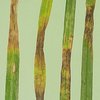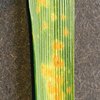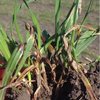



Crown rust (CR) occurs throughout NZ, but is found mainly in the...
Crown rust (CR) occurs throughout NZ, but is found mainly in the North Island. It is caused by the fungus Puccinia coronata, mainly in warm, moist conditions from early summer to late autumn. CR depresses pasture growth and palatibility.


Snow mould is caused by the fungus Microdochium nivale and can...
Snow mould is caused by the fungus Microdochium nivale and can sporadically cause serious disease. It can be a problem in establishing autumn sown pasture following cereals. Long, rank pasture swards can also become infected in winter, especially under snow.